The rogue vintner of Manhattan
A winemaker with a surprising backstory, Latif Jiji ’52 has run New York City’s sole vineyard as a backyard hobby for more than 30 years.
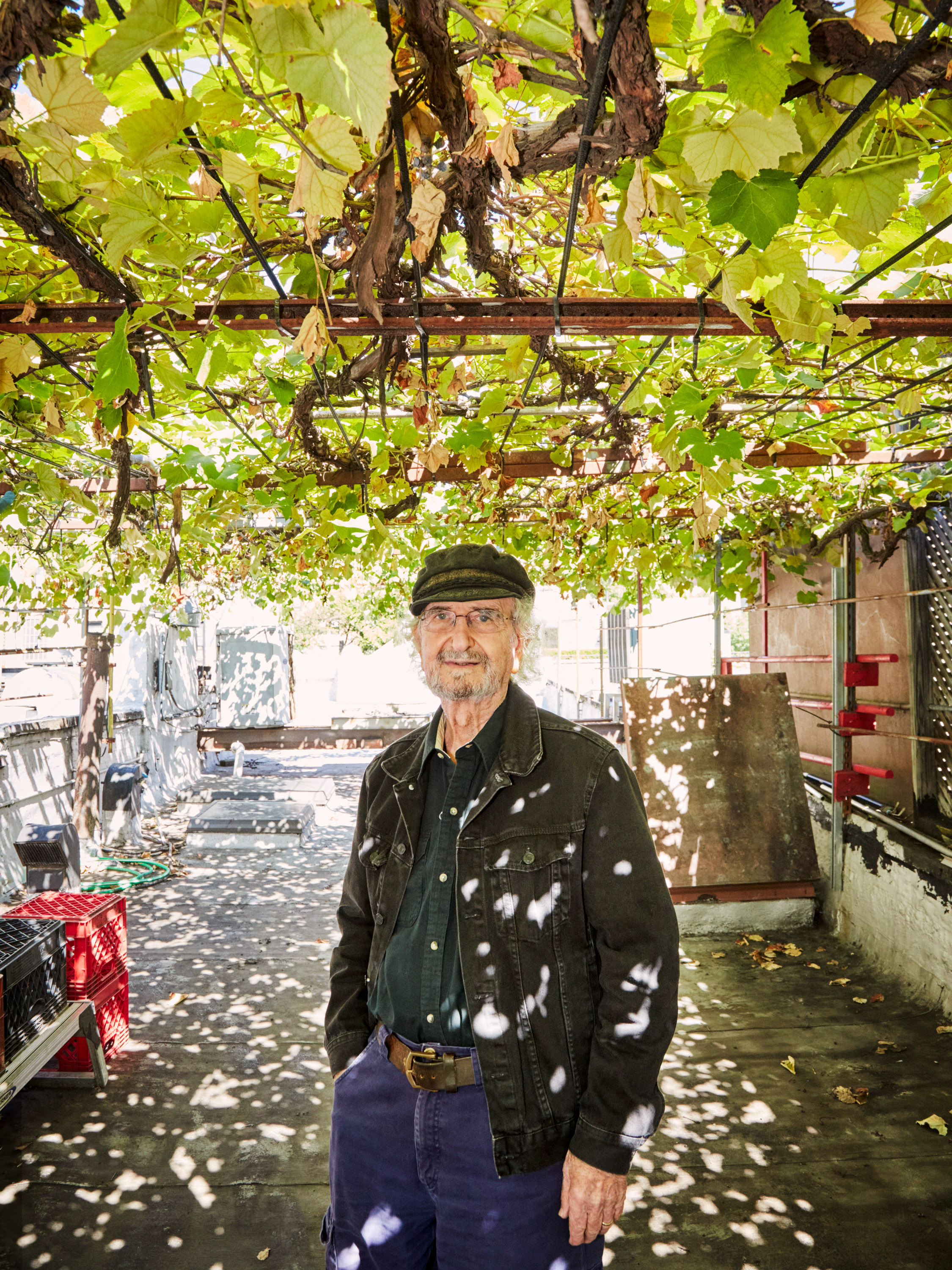
Latif Jiji didn’t mean to start Manhattan’s only vineyard in his backyard. It happened by accident.
One day in 1977, Jiji walked out to the garden behind the Upper East Side brownstone he and his wife, Vera, had been living in for about a decade and stuck a little grapevine in the ground, just to see what it would do. The vine, which he’d purchased on a whim from a store in the neighborhood, grew unobtrusively for years. Then in 1983 he returned home from a vacation to find, much to his delight, that it had fruited.
It didn’t take long before Jiji decided to try his hand at winemaking. He had no training—he worked as a professor of mechanical engineering at the City College of New York, not as a sommelier or vintner. But what he lacked in experience he made up for in curiosity, tenacity, and the sense that he could figure out anything he set his mind to.
Soon, he was collecting agricultural brochures from the Cornell Cooperative Extension office and stocking up on equipment like a hand-cranked crusher and de-stemmer and large glass fermentation bottles. He began using a refractometer to test sugar levels in the grapes to determine the best time to harvest them, and eventually he designed a pulley system to help with harvesting.
It took a bit for Jiji to figure out which rules from the winemaking books he definitely needed to heed and which he could apply more loosely. But as he made mistakes and tweaked his practices, he found himself hooked.
“My experience has been, all my life: You stick with it, you achieve it. I don’t like to give up.”
“I don’t jump from A to B to C to D, try something and get bored. I’m not like that. My experience has been, all my life: You stick with it, you achieve it,” Jiji says, sitting in the backyard below his Niagara grapevine on a sunny fall day. “I don’t like to give up.”
Both Jiji and his vine seem to have embraced this approach. In the three decades since it first bore fruit, the little grapevine—supplemented by a single cutting from the original—has grown into a behemoth that snakes up the back of Jiji’s four-story townhouse, past the small iron balcony on the third floor, and onto the roof (hence the need for the pulley system). In 1984, the first year he made wine, Jiji’s undertaking yielded enough for 24 half-bottles of white. Although the vine has produced as much as 700 pounds of grapes and 150 full bottles of wine in a single season, it typically yields 400 pounds and 60 to 80 bottles a year today.
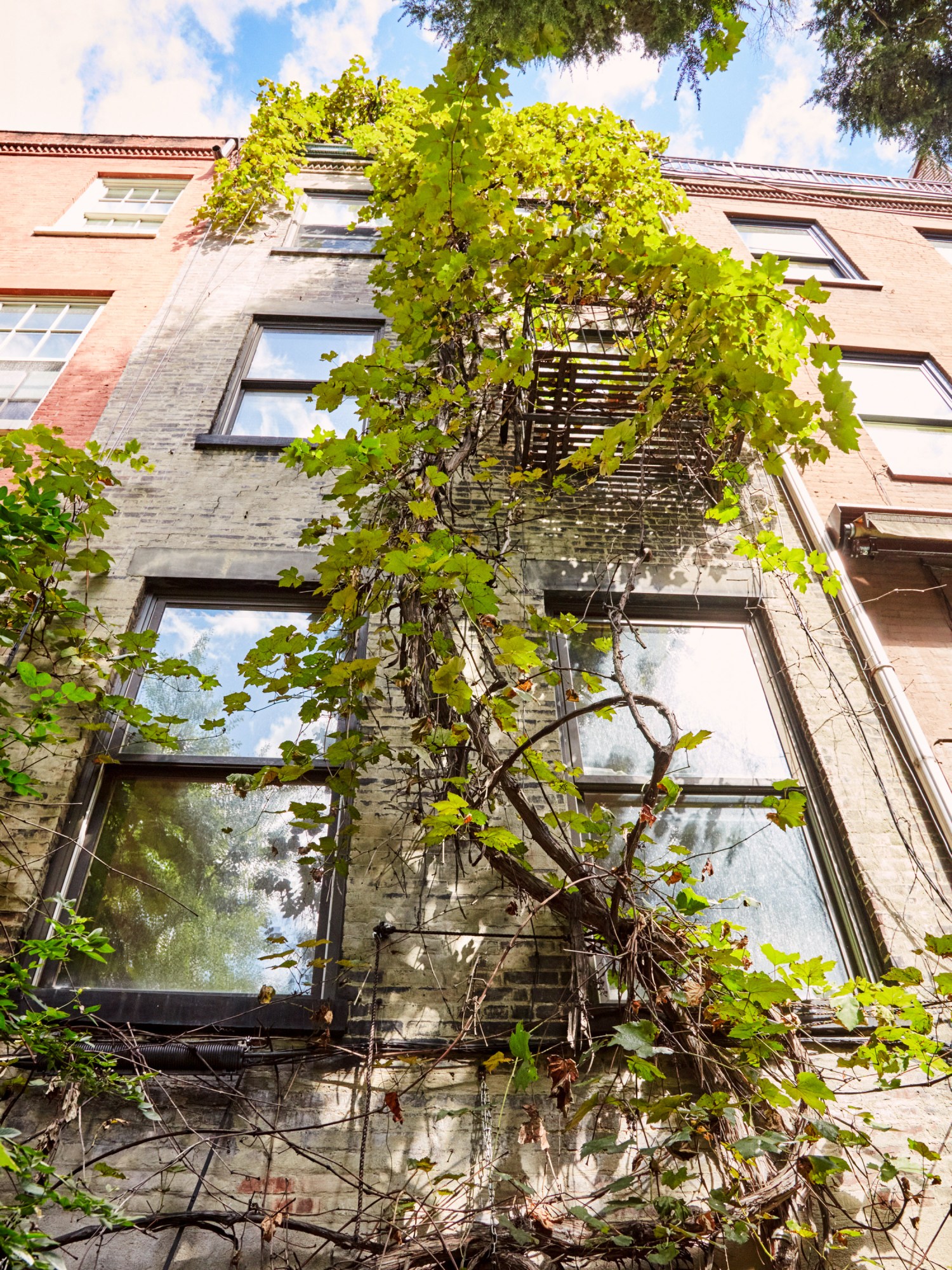
And Chateau Latif, as Vera dubbed the enterprise in a play on the name of the prestigious Château Lafite, has turned into an unexpectedly central part of Jiji’s life. His basement has become a makeshift wine cellar containing hundreds of bottles that date back to the ’80s—with hand-painted labels he designed himself. His rooftop is shaded by vine-laden trellises. And his home has become the annual gathering place for a revolving group of family, friends, and neighbors who come together to harvest the grapes every year.
Since he doesn’t have a license to sell and ship the wine—something the self-described “bootlegger” did for a brief while before realizing he needed a permit—most of the bottles are given away to the vibrant intergenerational community he has gathered around himself over the years.
Paige Finkelstein ’14 is just one of many people who’ve been pulled into Jiji’s orbit by his winemaking endeavors. Having seen him profiled on a local TV news station and learned he was a fellow MIT grad, she reached out and the two struck up a friendship, realizing they had both lived in the same dorm—Burton House—60 years apart. Since meeting, they’ve bonded over email exchanges about entrepreneurship and via in-person Shabbat dinners. Late last summer, Finkelstein joined the harvest for the first time, and she’s volunteered to climb onto the rooftop to prune the vine in the winter, too.
“While it seems surprising that someone had a winery in New York City, it made perfect sense, actually, that it was an MIT alum,” she says. “He’s 95 years old, and it’s very cool to see that his mind is still tinkering.”
Jiji’s earliest memories of wine date back to his childhood home in Basra, Iraq. In a majority-Muslim country where Muslims weren’t allowed to sell alcohol, it wasn’t unusual for Jewish families like his to make their own, and Jiji still remembers the “wonderful” scent of his family’s red wine.
“We had a barrel near our kitchen, and every time I passed by, I’d open it and sniff a little bit,” he says. “It really was the best wine I ever tasted.”
Jiji left Iraq at 20 to attend college in America. He spent his first three semesters at Hope College in Holland, Michigan, before transferring to MIT in 1949.
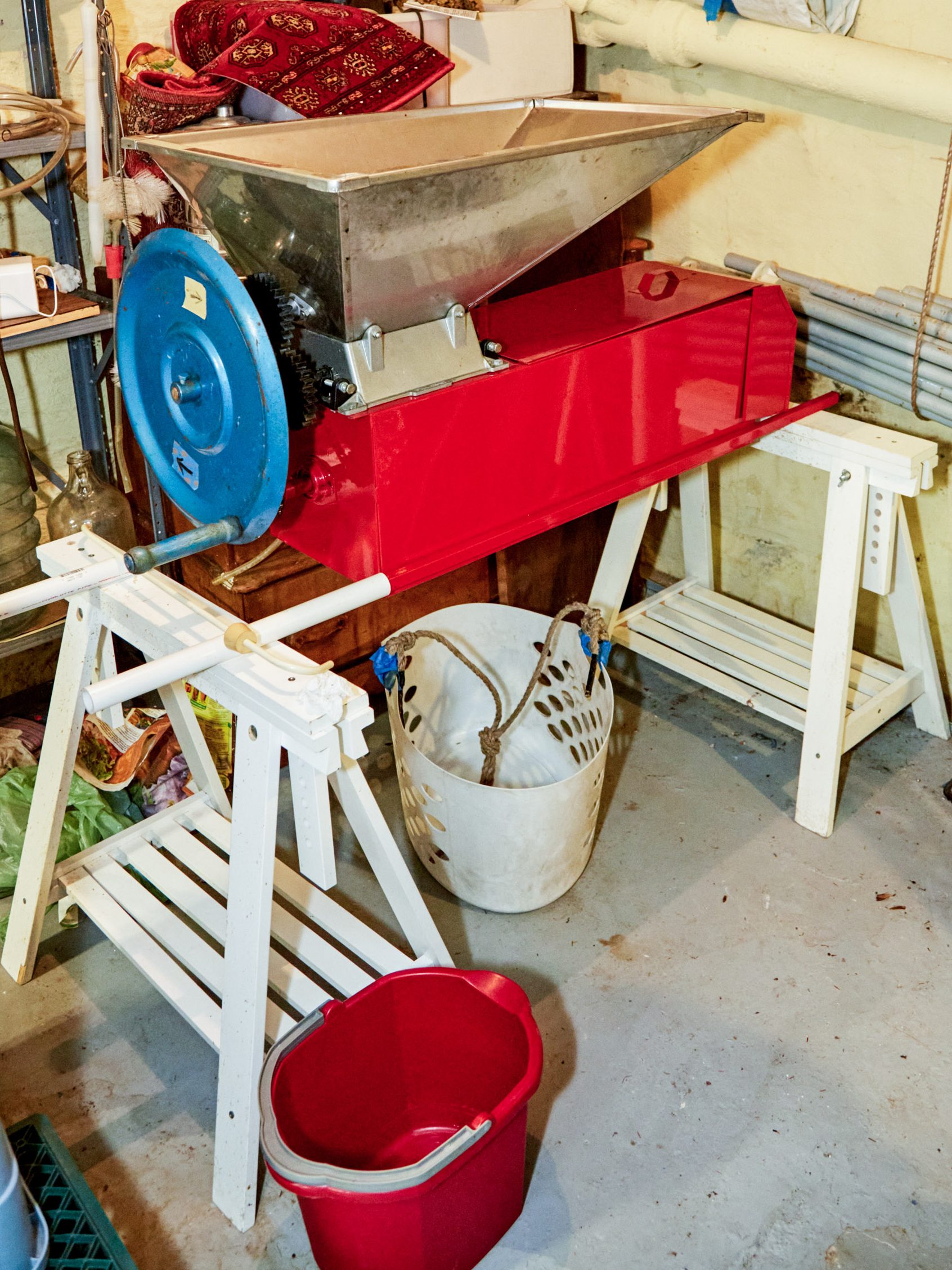
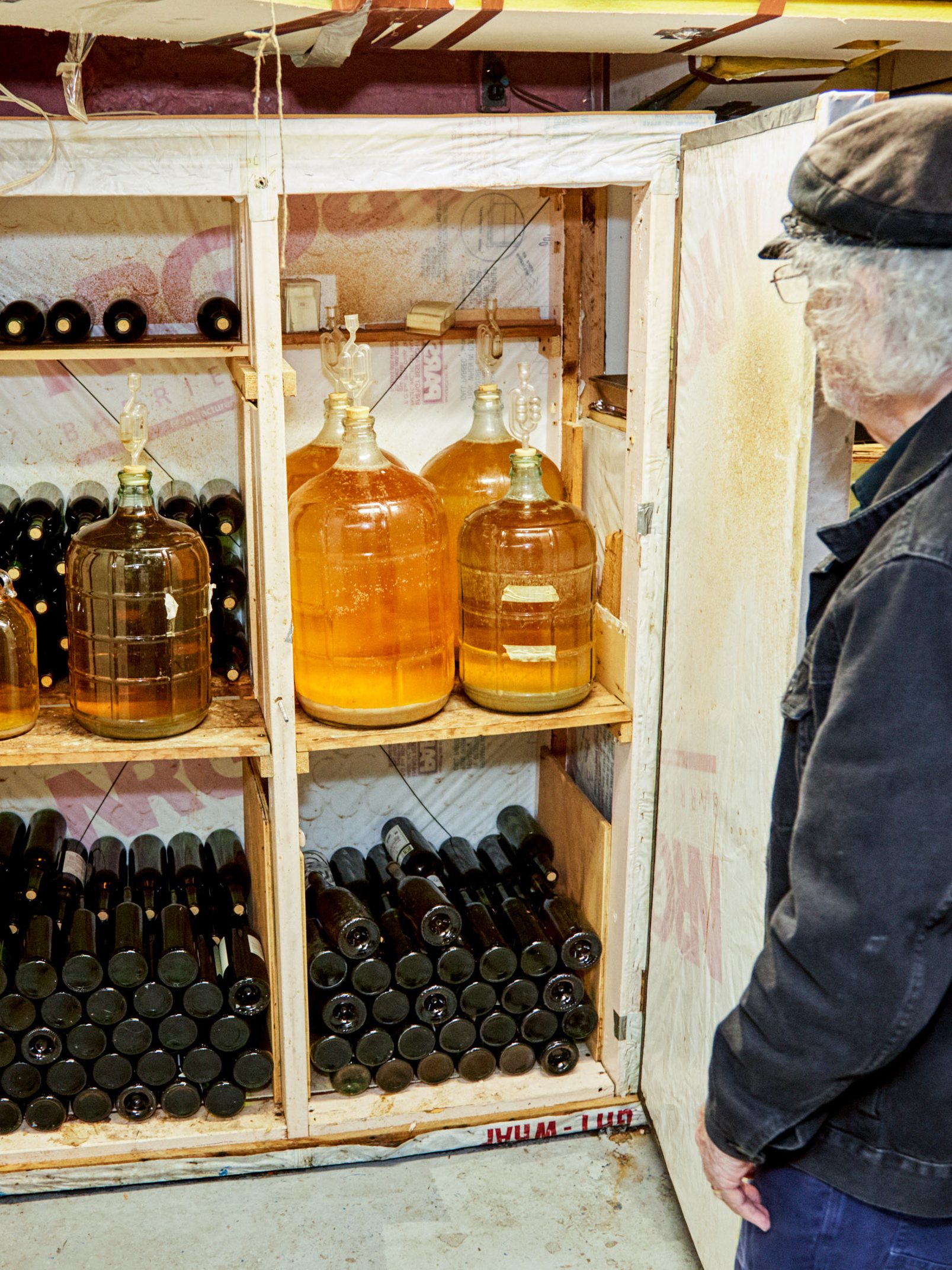
Jiji uses a hand-cranked crusher and de-stemmer (left). He built his own closet-like wine cooler, which is chilled by an attached mini fridge.
“Things were going wild with the partition of Palestine,” he says. Admission to Hope was crucial to his ability to get to the United States, without which, he says, his whole life would have been different. “I don’t celebrate my birthday—I celebrate the day I arrived in America,” he says. A few years ago, he went back to Hope to establish a scholarship in the name of the admissions director and secretary who paved the way for his arrival stateside. (He included the secretary, he said later, because he wanted to acknowledge the “people who normally are not recognized and often blamed when things go wrong.”)
Knowing that his ultimate goal was to pursue engineering, Jiji began to work on achieving the grades that would allow him to get into MIT. He wanted to go to “the best school in America,” so that was the only engineering school he applied to, despite gentle admonishments from his professors to cast a wider net.
“I knew very little English,” he recalls. “It would take me a whole weekend to read 20 pages, so I had to work very hard.” Despite the challenges, his persistence paid off, and soon he was headed to Massachusetts with an admissions letter in hand. At MIT, he reveled in “the rigor, the focus, and the acclimation to taking on challenging jobs.”
“I don’t celebrate my birthday— I celebrate the day I arrived in America.”
But political developments in Iraq—and the Middle East in general—in the late 1940s and early ’50s meant that finishing his degree would require him to become a stateless refugee. Since many family members were already refugees, having scattered to escape conflict in the region, Jiji chose to stay in the US. Given his shaky political status, he stuck with academia, pursuing degree after degree to retain his student status. That was how he ended up with a PhD.
“I was still a refugee with no green card, no visa, nobody to advocate my cause,” he says. “The only thing I could do was go to school for another year.”
But what he discovered along the way was a love, and gift, for teaching. Jiji was granted tenure three times, at both the University of Toledo and New York University, and then again when he finally landed at the City College of New York. It was in New York that he met Vera, who became a professor of literature and psychoanalysis at Brooklyn College, and began building a family with her. (Vera, a widow, already had two children and they would have two more. The couple recently celebrated their 58th wedding anniversary.) At City College, where he taught mechanical engineering for the next 50 years, he amassed teaching awards, authored numerous textbooks, and built lasting relationships with his students.
“I have students from 1962 who are still in touch with me,” he says, smiling behind wire-rimmed glasses beneath a cloud of white hair. “I was never bored. Not one day did I wake up and say, ‘Oh, I don’t feel like giving a lecture today.’ I loved it, and I really cared about my students.”
Since retiring in 2014—when he was feted by former students whose lives he’d touched, some of whom he hadn’t seen in 25 years—Jiji has stayed remarkably active. When he’s not taking care of Vera, who’s had a few falls in recent years, he’s exploring other hobbies, like watercolor, which he’s using to illustrate a book about the Iraq of his youth. Though he increasingly relies on friends and family to help with the more labor-intensive parts of grape harvesting, you’ll still find him marching down the stairs to his basement turned wine cellar, brushing past the wine refrigerator he built himself, or clambering up to the roof, which is accessed by a narrow set of self-built spiral stairs he calls his “last engineering job.”
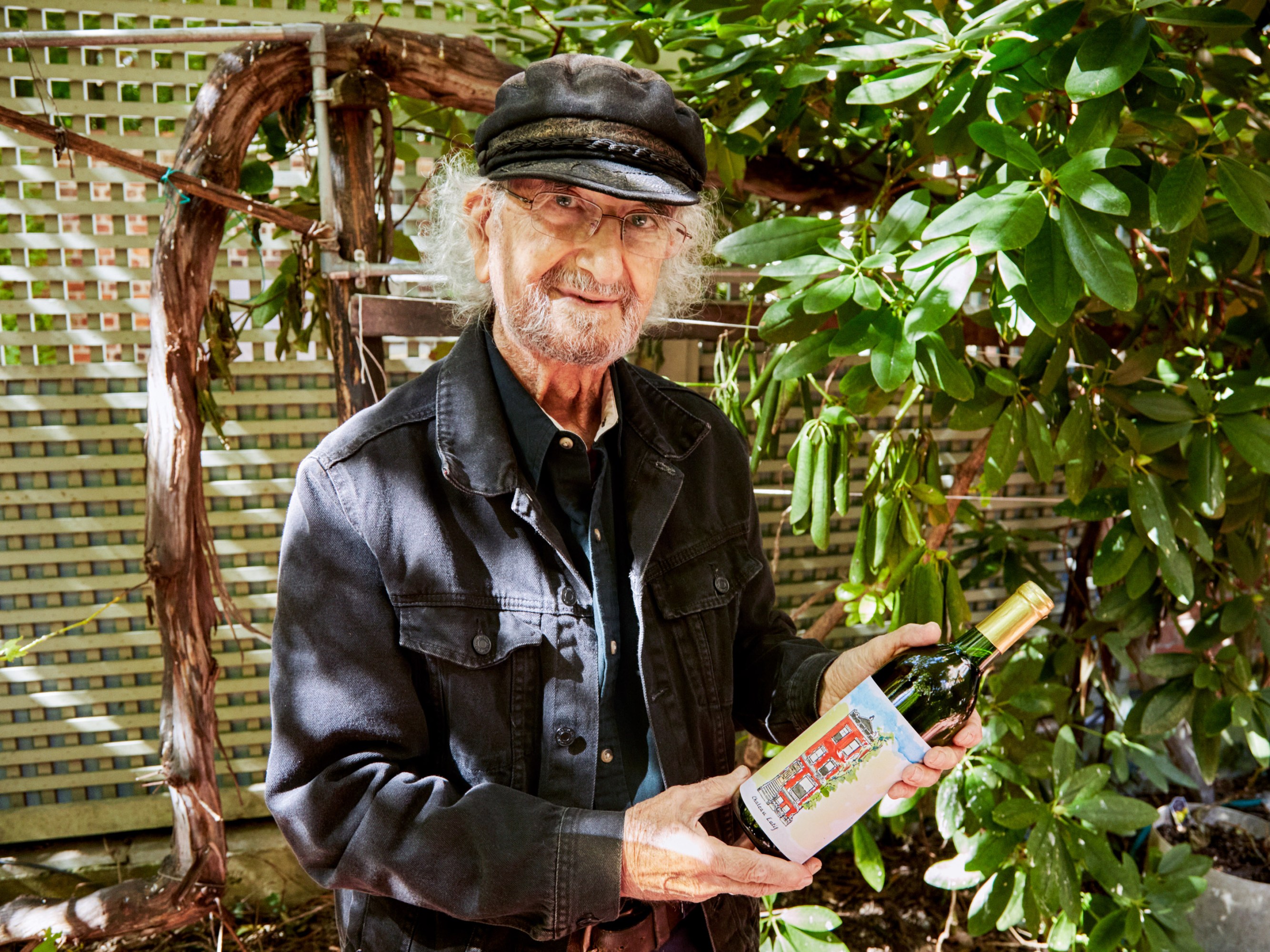
When Jiji does need help, friends readily volunteer. And his four kids—all of whom, he asserts, are smarter than he is—live nearby. (One who works at the UN recently visited Iraq in an official capacity, much to Jiji’s delight: “I leave as a refugee, and my daughter goes back and she’s greeted by the president,” he says.) They’ve all pitched in at his backyard vineyard, and one daughter found a compost operation that would collect the remains of the pressed grapes and turn them back into healthy soil.
Although the pandemic has led to some changes to the tradition, the annual gathering to harvest grapes and the Iraqi feast that follows it are attended by an ever-changing crew, from former students to the daughter of one of his long-ago MIT friends. A notebook that’s falling apart from years of use lists everyone who’s participated in the harvest, and Jiji loves that he doesn’t even recognize some of the names because the venture has brought so many strangers into his home.
“It’s always international, multi-generational, multi-ethnic. It’s beautiful, really,” he says, pointing out the crusher that kids love to crank by hand and mentioning with a smile the attendees who seem more invested in the wine and camaraderie than in the actual work of the harvest. He might give them a hard time about it, but Jiji doesn’t really seem to mind: the sense of community is a large part of what he’s come to love about winemaking.
As for Finkelstein, the MIT grad who recently joined her first Jiji harvest, it was a treat to leave with a couple of bottles of Chateau Latif’s finest. She hasn’t opened hers yet, because she’s saving them for a special occasion. While other wines may sell for thousands of dollars, Jiji’s, she says, is “probably the rarest wine in New York.”
Keep Reading
Most Popular
Large language models can do jaw-dropping things. But nobody knows exactly why.
And that's a problem. Figuring it out is one of the biggest scientific puzzles of our time and a crucial step towards controlling more powerful future models.
The problem with plug-in hybrids? Their drivers.
Plug-in hybrids are often sold as a transition to EVs, but new data from Europe shows we’re still underestimating the emissions they produce.
Google DeepMind’s new generative model makes Super Mario–like games from scratch
Genie learns how to control games by watching hours and hours of video. It could help train next-gen robots too.
How scientists traced a mysterious covid case back to six toilets
When wastewater surveillance turns into a hunt for a single infected individual, the ethics get tricky.
Stay connected
Get the latest updates from
MIT Technology Review
Discover special offers, top stories, upcoming events, and more.